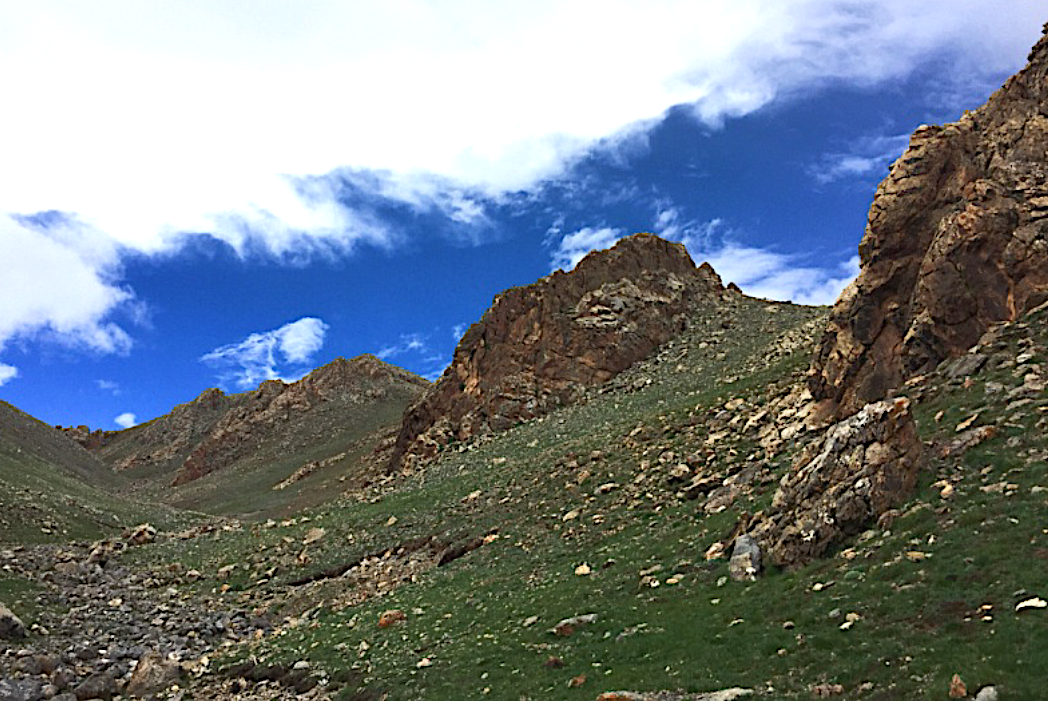Langshan Fm
Type Locality and Naming
North Lhasa Block – Sillin Co Basin. The Langshan Formation was erected by the Fourth Geological Brigade of the Xizang Bureau of Geology and Mineral Resources in 1973. The section for the designation is in Langshan of south Duoba of the Baingoin County, Xizang. (Han Xiangtao et al., 1983).
Lithology and Thickness
Lower part of the formation is represented by dark gray Orbitolina clayey limestone, limestone with calcareous mudstone and sandstone. Middle part is dark gray Orbitolina (a few number) limestone, massive limestone interbedded with Orbitolina limestone of different thicknesses. Upper part is gray and dark gray thick-bedded limestone with dark gray clayey Orbitolina limestone. The formation is more than 1052 m thick.
[Figure: Langshan Formation in Baingoin County, Xizang]
Relationships and Distribution
Lower contact
The base marked by calcareous sandstone lies conformably on clayey siltstone, fine sandstone and grit at the top of the underlying Qusongpo Fm [Not in Lexicon].
Upper contact
The top is not observed. Elsewhere, it has a disconformity to the conglomerate of the overlying Jingzhushan Fm.
Regional extent
The present formation occurs in Langshan of the Baingoin County, Daxiong of Coqen County, Dongcuo of Gerze County and Bangduo of Xainza County and extends westward to Jiega of the Gegya County. It is persistent in lithology and ranges from 600 to 2700 m in thickness. The top is not observed in most of the sections measured in the afore-mentioned areas.
GeoJSON
Fossils
In the Duobalangshan area, it bears foraminifera Orbitolina cf. aperta, O. concava, O. cf. birmanica, O. texana, O. cf. minuta, Stomatoecha plummerae, etc.; ostracods Pholadomya sp., Chlamys sp., Radiolites sp., Bournonia sp., Neithea attokensis, etc.
Age
Depositional setting
Additional Information
